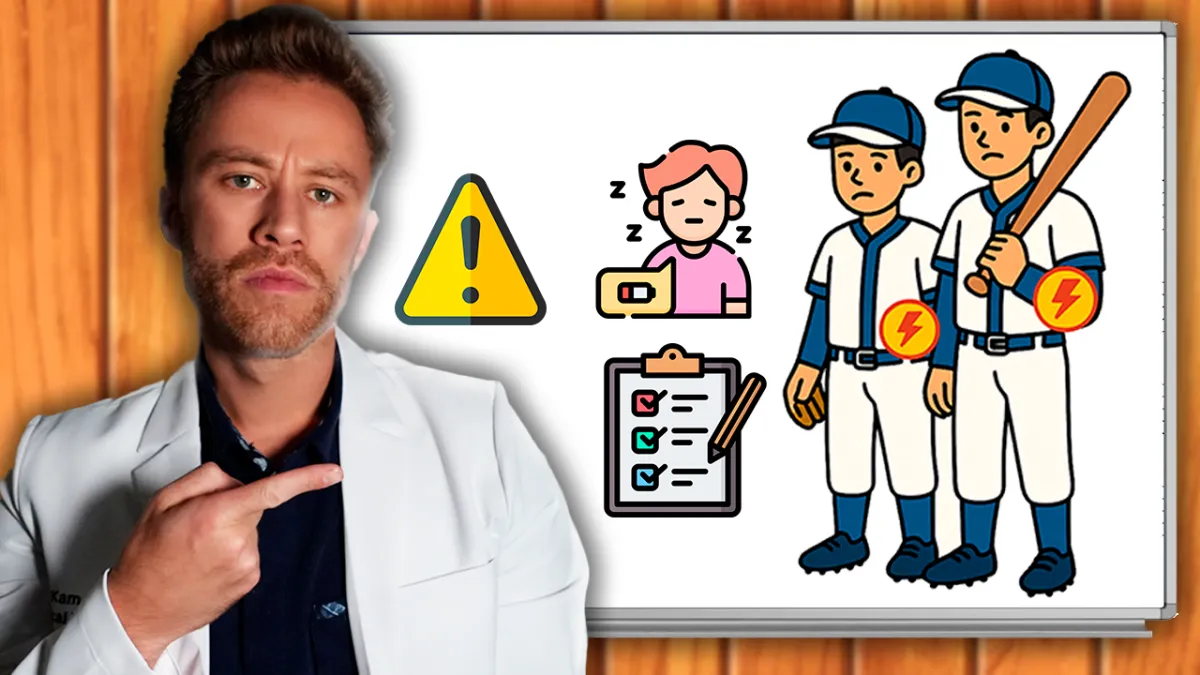
Stop Overuse Injuries in Kids’ Sports
Why Overuse Injuries in Youth Sports Are Rising Fast
Just imagine this: your young athlete is healthy, full of energy, and excelling in their sport. But underneath that success, stress may be quietly building.
Overuse injuries in youth sports develop gradually, often without pain—until it’s too late. The result? Time off, missed opportunities, and long-term damage.
I'm Dr. Kam—double fellowship-trained in sports, ortho, and spine rehab. I’ve helped hundreds of baseball athletes return stronger after injuries that were 100% preventable.
Let’s break down the exact strategies parents, coaches, and athletes can use to stop overuse injuries before they start.
Understanding the Root of Youth Overuse Injuries
Most overuse injuries in youth athletes come from repetitive movements without enough recovery time.
When young athletes specialize early, they train the same muscles repeatedly. That leads to imbalances and breakdown. The most common issues? Tendonitis and stress fractures.
Why Injury Surveillance Can’t Be Ignored
Tracking injuries isn't just for elite teams—it’s for anyone serious about long-term health.
Injury surveillance helps uncover patterns and prevent repeat injuries. Coaches and healthcare providers must know how to report, interpret, and act on this data.
What a Pre-Participation Physical Exam Should Actually Include
A basic sports physical isn't enough.
A proper pre-participation physical exam (PPE) should screen for muscular imbalances, growth stages (Tanner staging), flexibility issues, and injury history. These factors are key to spotting risk early.
I’ve seen everything from rushed 5-minute checkups to gold-standard evaluations. And trust me—it makes a difference.
Early Warning Signs You Should Never Ignore
Is your athlete complaining about arm pain, throwing fatigue, or a dip in performance? That’s not normal growing pains.
These are early signs of overuse injuries in youth sports. Pitch counts and rest days should be adjusted immediately. We also need to look deeper—leg length discrepancies, pelvic misalignments, and knee angles can all play a role.
How Coach and Parent Education Prevents Injuries
Most injuries aren’t from freak accidents—they’re from training errors.
That’s why youth coaches should hold proper certifications. Parents and athletes should also learn to spot early warning signs. And every team should have access to a sports medicine specialist for early intervention.
How Much Is Too Much? Know the Weekly Limits
Too many kids are over-scheduled. Playing on multiple teams. Practicing seven days a week.
The max recommended load is 16–20 hours of vigorous activity per week for pediatric athletes. And athletes should never be on multiple teams for the same sport in one season. Period.
Build a Smarter Conditioning Program
A proper program starts before the season.
General fitness should begin at least 8 weeks out, with weekly training volume increasing by no more than 10% at a time. Sudden spikes are a recipe for breakdown.
Why Multi-Sport Athletes Have the Longevity Advantage
Early specialization = early burnout.
Athletes who play multiple sports develop more balanced strength, avoid mental fatigue, and experience fewer overuse injuries. And yes, taking an off-season is non-negotiable.
Even a month of rest between seasons can make a huge difference.
Next step?
Watch my latest YouTube video on what it takes to stop overuse injuries in kids’ sports:
Stop Overuse Injuries in Kids’ Sports
Interested in learning more? Check out our other articles on how to keep the youth healthy,or contact me directly to tailor a program that’s right for you:
So—how do we prevent overuse injuries in youth sports?
By understanding risk factors, advocating for smart training, and supporting coaches and parents with better education and systems.
I’m Dr. Kam, and I specialize in helping baseball and softball athletes throw hard and stay healthy. This isn’t just theory—it’s what I do every day.
